What are the features that make for the best frameless monitors? First and foremost, the top frameless monitor offers excellent image quality and an attractive design that’s hard to beat. The frameless design allows for larger screen sizes with more real estate to play video games, watch movies, and work.
On top of the attractive design, the best computer monitors with ultra-thin bezels still offer all the trappings of a high-end monitor. These features include things like 4K resolution, fast response time, accurate colors, and a broad range of connectivity options. Consider reading this guide if you’re wondering what is a 4K monitor.
Features like these are abundant for many display brands, including Acer. Our review of the Acer VG271U monitor discusses all this and more.
Continue reading to learn more about the best frameless monitors available on the market today, how they can increase your efficiency, and how they can create a more comfortable viewing experience overall.
Top Frameless Monitors
#1 HP VH240a 23.8-Inch Monitor
Award: TOP PICK
WHY WE LIKE IT: This monitor has a large screen and is very comfortable to use. It has a selection of connectivity options to enable plugging in a wide variety of devices.
- Incredible picture quality
- Very ergonomic stand
- Built-in speakers
- It takes up a lot of space on the desk
- Speakers lack bass
The HP VH240a 23.8-inch monitor features a Full-HD display that provides vibrant imagery and text. This device has an anti-glare coating that will especially appeal to users who work in brightly lit offices. With three thin bezels on the top and sides, this device provides an immersive viewing experience. It has a very flexible stand that allows tilting and even swiveling into portrait mode, making it a good choice for graphic design professionals. However, this monitor takes up a lot of space on the desk.
But some of the best monitors need space, as you’ll see in our write-up for the ViewSonic VX2776 4K MHD monitor.
Unlike the AOC U2790VQ, this HP VH240a 23.8-inch monitor features built-in speakers to simplify conference calling and video playback. It’s ENERGY STAR certified for efficient performance. This device has wide viewing angles, providing consistent image quality even when viewed from the sides. A 100mm VESA interface also enables fixing this device on the wall. With both HDMI and VGA ports, this device is easy to connect to older and newer computers and video game consoles. If you like HP monitors but want to explore other brands, you might also want to consider the best Dell monitor.
#2 AOC C24G1A 24-Inch Monitor
Award: HONORABLE MENTION
WHY WE LIKE IT: Features such as a high refresh rate, anti-screen-tearing tech and a super low response time will delight gamers. The device also has a heavy-duty build, which is dependable.
- Amazing gamer-friendly features
- 1500R screen curvature
- Wide selection of input ports
- Picture is distorted at wide angles
The AOC C24G1A 24-inch monitor is a Full HD model marketed to gaming enthusiasts. This device has a 1500R screen curvature, providing an immersive experience and minimizing neck strain. With a 1ms MPRT and 165Hz refresh rate, this device provides epic gaming performance. It features FreeSync Premium to eliminate screen tearing when connected to compatible computers and consoles. Be sure to learn about the benefits of FreeSync if you’ve already learned what FreeSync is. However, this device suffers from color shift when it is viewed from the sides.
This AOC C24G1A 24-inch monitor features a triangular stand that provides stability and leaves enough space on the desk for connecting computer peripherals. It has a VA panel with a high contrast ratio, delivering incredibly deep blacks. This device comes with VGA, HDMI, and Displayport inputs for near-universal connectivity to computers and consoles. Featuring flicker-free tech and a low blue light mode, this flicker-free monitor provides strain-free viewing. An adjustable stand enables easy customization.
#3 Philips 276E9QDSB 27-Inch Monitor
Award: BEST FOR CONTENT CREATION
WHY WE LIKE IT: This monitor has a very expansive color gamut, making it a good choice for graphic design professionals. The monitor also has anti-tearing tech that will appeal to people seeking a good monitor for gaming.
- Extremely wide color gamut
- AMD FreeSync
- Very wide screen
- Wall mounting is complicated
The Philips 276E9QDSB 27-inch monitor has an aesthetically pleasing design that will raise the profile of any desk. This full HD monitor delivers crisp images and high-quality text, so it’s suitable for gaming and office use. Its large screen is ideal for content creation too. The device has a very wide color spectrum that’s suitable for photo and video editing. However, the ports of this device are located too close to the VESA interface, complicating wall mounting.
This Philips 276E9QDSB 27-inch monitor has flicker-free tech and a low blue light filter, which is kind on the eyes. It features AMD FreeSync to eliminate screen tearing from gaming content. The device has very thin bezels to provide an immersive viewing experience. With an IPS panel, this monitor provides wide viewing angles and maintains clarity when viewed from the sides. It covers a whooping 93% of the NTSC color gamut and 124% of the sRGB color space.
#4 ViewSonic VX3276-MHD 32-Inch Monitor
Award: BEST FOR MUlLTIPLE-WINDOW SETUPS
WHY WE LIKE IT: This monitor has a big screen that enables users to work comfortably with multiple windows open at the same time. It’s a good choice for people who don’t want to invest in a second monitor. Plus, it just may be one of the best 32-inch monitors.
- Massive screen size
- Integrated split-screen software
- A wide variety of inputs
- Controls are located on the back
- Some backlight bleed
Users who prefer a large screen will be pleased with the ViewSonic VX3276-MHD 32-inch monitor. This monitor has an anti-glare coating that minimizes glare and reflections. The device has very thin bezels and a large 32-inch screen, providing maximum immersion. It is ideal for users who regularly work with multiple windows open at the same time. With low blue light and flicker-free technology, this monitor is comfortable to use. However, the controls are located in an awkward position at the back, which makes adjusting settings difficult.
The ViewSonic VX3276-MHD 32-inch monitor has a sleek design with a metallic gray finish that will add a touch of elegance to any desk. It has a detailed Full HD resolution that provides detailed imagery and text. This monitor has DisplayPort, HDMI and VGA inputs, so connecting computers and consoles of all sorts is possible. It has an IPS panel, delivering crisp images even when viewed from the sides. The included Split Screen software enhances the experience with side-by-side windows.
#5 Sceptre E275W-FPT 27-Inch Monitor
Award: BEST FOR OFFICE
WHY WE LIKE IT: This Full HD monitor has wide viewing angles, so people can comfortably watch from the sides. Its integrated sound system and selection of ports make it an excellent device for the office.
- Incredibly accurate color reproduction
- Built-in speakers
- Wide selection of input and output ports
- Poor sound quality
The Sceptre E275W-FPT 27-inch monitor has a variety of features that will suit use in the office and home theater. This IPS panel has wide horizontal and vertical viewing angles that will suit people who want to view content with colleagues. It covers an astounding 99% of the sRGB color gamut and has accurate colors, so it suits photo and video editing. It has both audio input and output ports. However, the speakers on this unit lack bass and don’t get very loud.
This Sceptre E275W-FPT 27-inch monitor has a 75Hz refresh rate for solid gaming and multimedia content playback. It has built-in speakers that offer good audio quality. A built-in low blue light filter provides eye comfort. Its frameless design offers immersive viewing. With a VESA interface, this device can easily be mounted on the wall. It has an ergonomic stand that allows for tilting as needed. This device comes with HDMI and VGA ports for easy connectivity.
#6 Samsung CR50 LC27R500FHNXZA 27-Inch Monitor
Award: BEST FOR GAMING
WHY WE LIKE IT: This Samsung monitor has 1800R curvature and a large frameless screen that provides visual immersion. The monitor also has advanced features that will appeal to casual gamers.
- Outstanding picture quality
- 1800R curved screen
- Eye care technology
- Some colors are not natural
- Lacks physical volume button
The Samsung CR50 LC27R500FHNXZA 27-inch monitor features a 1800R curved screen that reduces neck fatigue. This Samsung monitor has a VA panel with a 3000:1 contrast ratio, delivering deep blacks during movie watching and gaming. Gamers will be delighted to know that this device has FreeSync for reducing screen tearing. This Samsung monitor has flicker-free backlight that will provide comfortable viewing. However, the monitor lacks a physical volume button, so adjusting the speaker volume is complicated.
This Samsung CR50 LC27R500FHNXZA 27-inch monitor has a Y-shaped stand, which provides stability without taking up too much space on the desk. Its black finish blends in easily with CPUs and workstation peripherals. The monitor has a three-sided frameless design for immersive viewing and aesthetic appeal. Its stylish design will raise the look of any room. With a 4ms response time, this device enhances gaming performance. HDMI ports provide hassle-free connectivity.
Beginner’s Guide to Frameless Monitors
What Are Frameless Monitors?
Like all other computer displays, a frameless monitor is a device that connects to your computer and displays the information coming from your computer. This way, you’ll be able to use your computer to open and navigate applications, video games, and the internet.
Frameless monitors feature a unique aesthetic and visual design when it comes to the monitor’s bezel, which is the border around the display. The bezels are usually made out of plastic and protect the computer’s LCD panel from damage while providing support for the panel.
Of course, frameless monitors aren’t truly bezel-less. They typically offer ultra-thin bezels around the entire monitor. You may also see a three-sided frame frameless design, which features thin bezels on the top and sides of the monitor, but a large bezel on the bottom of the monitor. If you are interested in frameless monitors but fear any motion blur since the screen’s more isolated and prominent, some monitors use black frame insertion to reduce that blur.
Frameless Monitors vs. Traditional Monitors
When it comes to core functionality, frameless monitors don’t differ from traditional computer monitors. They both connect to your computer or laptop via a display cable like HDMI, DisplayPort, and VGA. Once connected, they both will display images and data from your computer without you needing to do more.
The difference between frameless options and standard options comes into play when you consider the actual design of the monitor. Traditional monitors tend to offer a large border around the LCD panel, usually measuring in at an inch of thickness, or more, especially if they’re one of the best computer monitors with webcams.
Monitors with ultra-thin bezels typically offer borders that measure in at mere millimeters. The difference is incredibly noticeable, which creates a frameless look and perceptibly larger screen sizes.
How Frameless Monitors Work
On a technical level, frameless monitors don’t work any differently than traditional office displays. The monitors connect to a power source via a power cable, then to your computer via the display ports on both the monitor and the computer.
Once your monitor is powered on, the display technology in your monitor receives input from your computer and mirrors that information visually for you to see.
Most frameless monitors use either LCD or LED display technology. Let’s take a closer look at the differences between LCD and LED monitors:
- LCD: LCD is an acronym for liquid crystal display, which refers to the type of display technology a monitor uses. LCD monitors are also often called flatscreen displays. These displays use two panels of glass to contain a liquid crystal material, which reacts to light and electric current to create images and text. These monitors are most commonly backlit using cold cathode fluorescent lamps (CCFLs).
- LED: LED is an acronym for light-emitting diode, which refers mainly to the type of backlighting used in these monitors. LED monitors are a type of LCD monitor that uses LED backlighting instead of CCFLs. These computer displays are becoming more commonplace on the market today.
Do You Really Need a Frameless Monitor?
If you’re focused on creating a home office or gaming setup with the sleekest design aesthetic, then you absolutely can’t go wrong with a frameless monitor. Their virtually bezel-less design makes for a cutting-edge look that’s hard to beat.
You’ll also be getting a lot of high performance if you purchase a frameless monitor, especially for gaming and creative design work. The added screen real estate is a nice plus, but most frameless options are high-end monitors with the latest in display technology included.
Is a Frameless Monitor Worth Buying?
- You Enjoy a Sleek Desktop Aesthetic: With more people transitioning to a remote work lifestyle, it has become more important than ever to create a comfortable workspace. There’s no doubt that a frameless computer display can create a truly aesthetic look for your home office.
- You Want a Multi-Monitor Setup: Frameless monitors are particularly well-suited for seamless multi-monitor setups. If you’re using two or three frameless displays next to each on your desk, you won’t have to worry about thick borders disrupting the overall flow.
- You’re a Gamer or Creative Professional: Since frameless monitors tend to offer the best in terms of high-end features and functionality, they are an excellent option for gamers and creative professionals. These monitors tend to offer low input lag, fast response time, vibrant colors, and excellent color accuracy.
Why a Frameless Monitor May Not Be For You
- You’re on a Tight Budget: The top frameless monitors tend to be on the higher end of the price range. If you’re looking for a cheap monitor, you’ll likely be hard-pressed to find something good in this category.
- Your Desk Is in a Highly Trafficked Area: Since they don’t have as much frame to support the LCD or LED panel, frameless monitors tend to be more fragile than other computer monitors. As such, we recommend avoiding these options if your desk is in a highly trafficked area or if there is a higher risk of it getting knocked over.
How Long Will a Frameless Monitor Last?
Since frameless monitors use either LCD or LED display technology, there are two different lifespans to consider. The lifespan rating for monitors ultimately depends on how well you treat the monitor, how often you use them, and what level of brightness you use on a regular basis.
According to most companies with technical expertise in display technology, like TechiExpert, LCD monitors should last you around 30,000 to 60,000 hours, which translates to roughly 8-10 years. LED monitors should last you anywhere between 80,000 and 120,000 hours, which translates roughly to around 10-15 years.
How to Choose the Best Frameless Monitor
Before you even start to research the different frameless displays available on the market today, it’s important to determine what features and specifications you should consider. Taking the time to do your research ahead of time can make all the difference when it comes time to start looking at products.
Frameless Monitor Key Factors to Consider
Your answers to the following questions can help you narrow down your choices in a substantial manner. Read through these questions to learn which key factors you should consider:
1. What types of things are you going to do on your frameless monitor?
Before anything else, you’ll need to decide exactly how you plan on using your frameless display. This way, you’ll be able to prioritize specific features over others. Consider the following use-case scenarios:
- Casual/General Use: If you simply need a monitor for casual use with your computer, then you won’t need to worry about much more than sticking to your budget and finding a reliable option.
- Business Use: When using a monitor for business use, you’ll want to consider things like connectivity options, eye care technology, and at least full HD screen resolution. You may also want to consider additional features like built-in speakers, USB ports, and built-in webcams.
- Gaming Use: Professional gamers will want a monitor that offers an immersive gaming experience thanks to things like a curved screen, vibrant colors, a high dynamic contrast ratio, and quick response times. You’ll also want to consider features that allow you to sync up with your computer’s graphics card, like Nvidia G-Sync or AMD FreeSync.
2. What panel technology should you choose for your frameless monitor?
LCD and LED computer monitors utilize one of three different panel types. The panel type you choose for your computer can have a significant effect on overall performance and price range. Let’s take a look at the different types of panels you can purchase:
- VA panel: Vertical Alignment (VA) panels are good all-around displays that offer wide viewing angles and a wide color gamut. They struggle a bit when it comes to response times, so a VA panel may not be the best choice for gamers. In VA panels, the liquid crystals align vertically when activated.
- IPS panel: In-plane switching (IPS) panels are considered top-of-the-line monitors today, thanks to wide viewing angles, best-of-class color accuracy, and extra fast response times. An IPS monitor is an excellent choice for gamers and creative professionals. In an IPS monitor, the liquid crystals constantly shift their patterns to create a better picture quality.
- TN panel: Twisted Nematic (TN) panels are among the most affordable monitors available today. They also offer the fastest response times, making them the perfect choice for competitive gamers. TN panels struggle when it comes to narrow viewing angles, though. In a TN monitor, the liquid crystals are configured in a way to twist the light as it passes through the monitor.
3. What kind of image quality should you consider for your frameless monitor?
While it may seem simple enough to just say that you should always purchase the monitor with the best image quality, the actual process is more nuanced than that. There are a wide variety of image quality specifications to consider, including:
- Screen size: Frameless monitors can come in all different screen sizes, but a 24-inch monitor and a 27-inch monitor are the most common in this category. Screen size is a subjective matter. What you get can vary depending on how much desk space you have and how much you’re willing to spend.
- Resolution: Screen resolution is a very important factor to consider with frameless monitors. If you want the most immersive experience, you’ll want a higher resolution. At the very least, you should purchase a full HD monitor with a 1920×1080 pixel resolution. If you’ve got the budget, we recommend purchasing a 4K monitor with a 3840×2160 pixel resolution. You also need to choose a high resolution monitor if you are looking for the best monitor for macbook pro.
- Color accuracy: A wide color gamut can produce accurate colors and vibrant colors, making this specification one of the most important for gamers and creatives alike.
- Eyecare technology: Image quality doesn’t matter if your eyes hurt too much to stay focused on the screen. Consider purchasing an option with features to prevent eye strain, like Asus Eye Care.
4. Do you need any gaming-specific features for your frameless monitor?
Professional gamers looking for a frameless gaming monitor should consider the following specifications:
- Refresh rate: Your monitor’s refresh rate refers to its ability to update the display with new images every second. This is sometimes also called the frame rate. If you’re playing competitive games, you’ll want a higher number here. A 120Hz refresh rate tends to be the sweet spot for gamers.
- Input lag: Your monitor’s input lag refers to the speed at which it responds to what you’re doing on your mouse and keyboard. Lower input lag is preferable for gamers. Look for input lag in the 1ms to 5ms range for the best gaming results.
- Adaptive sync compatibility: Your monitor’s adaptive sync compatibility refers to its ability to sync directly with the refresh rate of your computer’s graphics card. Once synced, using a feature like Nvidia G-Sync or AMD FreeSync, you’ll get the most immersive and seamless gaming experience.
5. How are you going to connect your frameless monitor to your computer?
The connectivity options available on your frameless monitor should match what you have available on your computer. It’s preferable to not use an adapter, but with some laptops and computers, this may be required. The best input ports to use include HDMI, DisplayPort, VGA, and USB-C.
You may also want to consider a monitor with additional connectivity options like an audio input for external speakers or standard USB ports for peripherals like your keyboard, mouse, and webcam.

![Best Frameless Monitors in [year] 1 best frameless monitor](https://www.gadgetreview.dev/wp-content/uploads/best-frameless-monitor.jpg)


![Best Frameless Monitors in [year] 2 HP VH240a 23.8-inch Full HD 1080p IPS LED Monitor with...](https://m.media-amazon.com/images/I/31PTviHMeUL._SL160_.jpg)
![Best Frameless Monitors in [year] 3 AOC C24G1A 24' Curved Frameless Gaming Monitor, FHD...](https://m.media-amazon.com/images/I/51mabOQapZL._SL160_.jpg)
![Best Frameless Monitors in [year] 4 Philips 276E9QDSB 27' Frameless Monitor, Full HD IPS,...](https://m.media-amazon.com/images/I/51LOGTRlRXL._SL160_.jpg)
![Best Frameless Monitors in [year] 8 Our #4 Pick is the ViewSonic VX3276-MHD 32-Inch Monitor](https://m.media-amazon.com/images/I/41BRFZN8WPL._SL160_.jpg)
![Best Frameless Monitors in [year] 9 Our #5 Pick is the Sceptre E275W-FPT 27-Inch Monitor](https://m.media-amazon.com/images/I/41nYdx1rPWL._SL160_.jpg)
![Best Frameless Monitors in [year] 10 Our #6 Pick is the Samsung CR50 LC27R500FHNXZA 27-Inch Monitor](https://m.media-amazon.com/images/I/517XybcOU-L._SL160_.jpg)







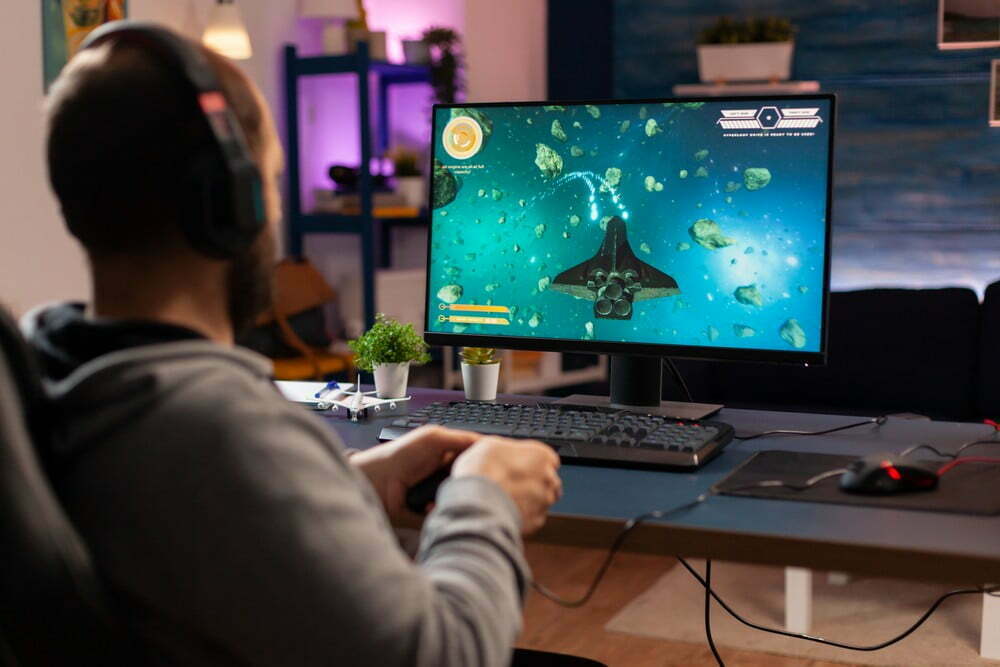





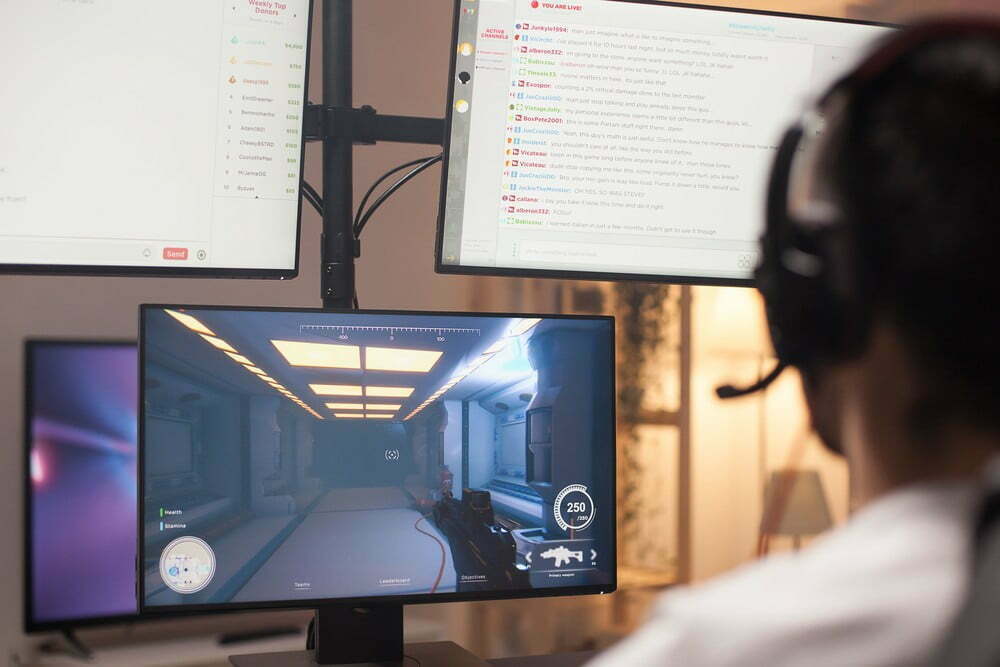
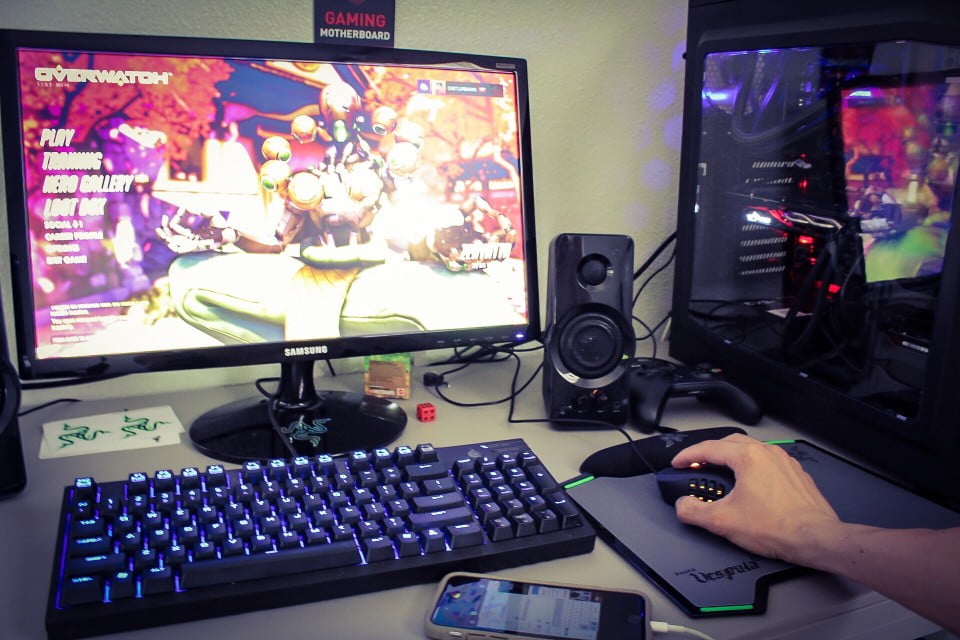

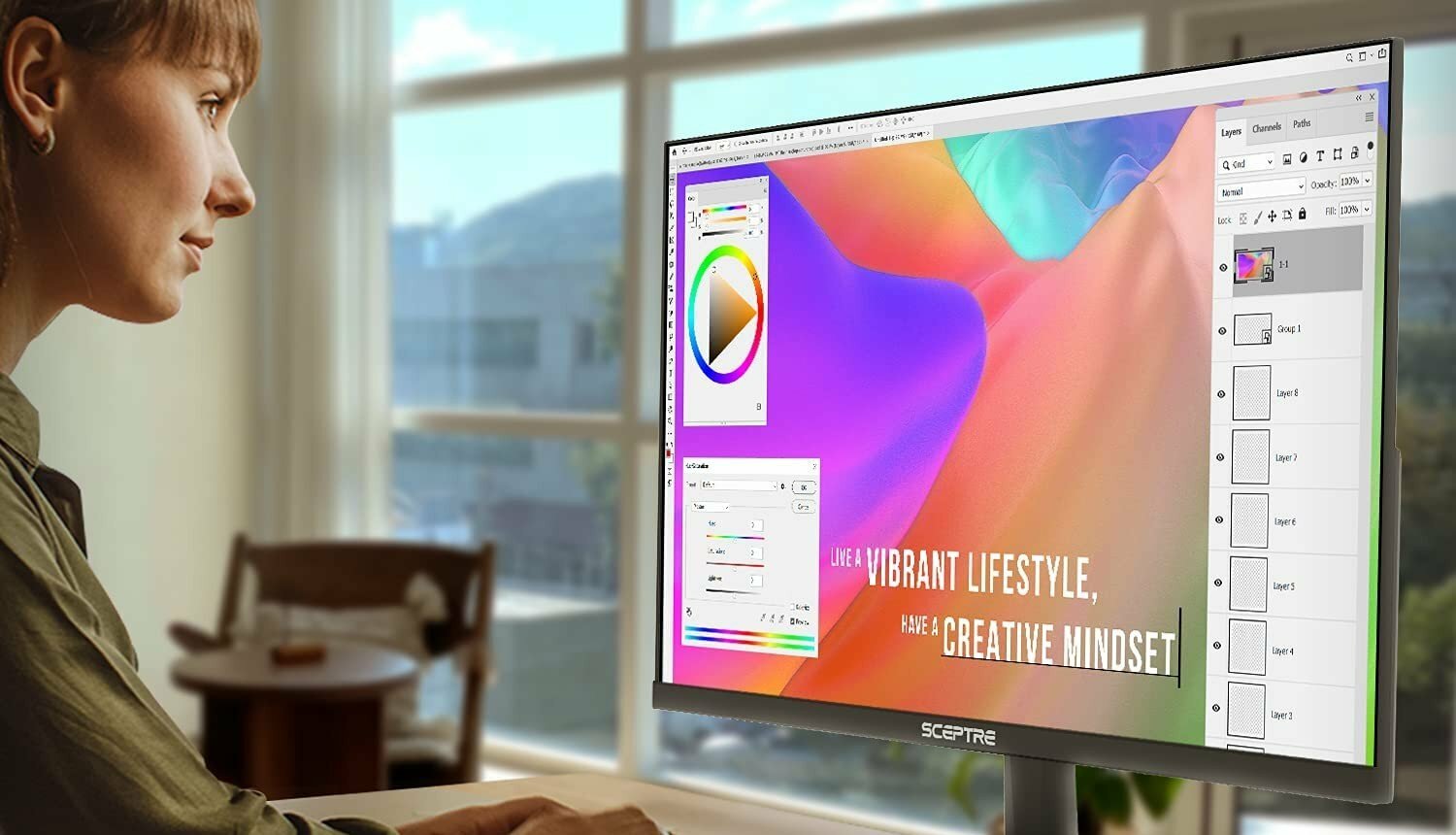


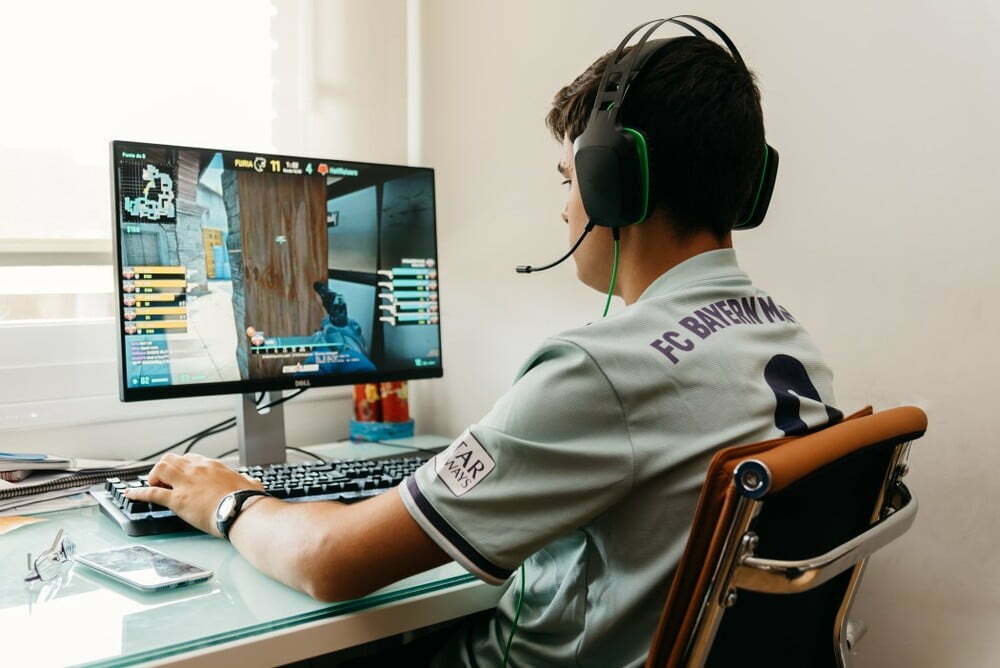

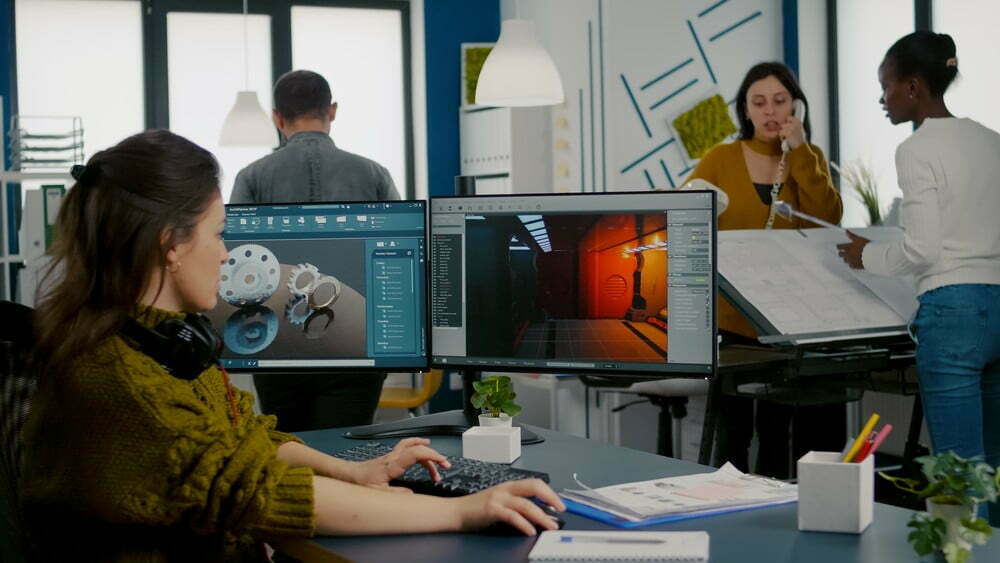
![Best 27 Inch Computer Monitor in [year] 31 Best 27 Inch Computer Monitor in 2026](https://www.gadgetreview.dev/wp-content/uploads/how-to-buy-the-best-computer-monitor.jpg)
![Best BenQ Monitors in [year] 32 Best BenQ Monitors in 2026](https://www.gadgetreview.dev/wp-content/uploads/best-benq-monitor-image.jpg)
![Best ASUS Monitors in [year] 33 Best ASUS Monitors in 2026](https://www.gadgetreview.dev/wp-content/uploads/best-asus-monitor-image.jpg)
![Best Dell Monitors in [year] 34 Best Dell Monitors in 2026](https://www.gadgetreview.dev/wp-content/uploads/best-dell-monitor-image.jpg)
![Best HP Monitors in [year] 35 Best HP Monitors in 2026](https://www.gadgetreview.dev/wp-content/uploads/best-hp-monitor-image.jpg)
![Best Lenovo Monitors in [year] 36 Best Lenovo Monitors in 2026](https://www.gadgetreview.dev/wp-content/uploads/best-lenovo-monitor-image.jpg)
![Best ViewSonic Monitors in [year] 37 Best ViewSonic Monitors in 2026](https://www.gadgetreview.dev/wp-content/uploads/best-viewsonic-monitor-image.jpg)
![Best Gigabyte Monitors in [year] 38 Best Gigabyte Monitors in 2026](https://www.gadgetreview.dev/wp-content/uploads/best-gigabyte-monitor-image.jpg)
![Best Monitors for PS4 Pro Gaming in [year] 39 Best Monitors for PS4 Pro Gaming in 2026](https://www.gadgetreview.dev/wp-content/uploads/best-monitors-for-ps4-pro-image.jpg)
![Best Monitor for Xbox Series X in [year] 40 Best Monitor for Xbox Series X in 2026](https://www.gadgetreview.dev/wp-content/uploads/best-monitor-for-xbox-series-x-image.jpg)
![Best Acer Monitors in [year] 41 Best Acer Monitors in 2026](https://www.gadgetreview.dev/wp-content/uploads/best-acer-monitor-image.jpg)
![Best MSI Monitors in [year] 42 Best MSI Monitors in 2026](https://www.gadgetreview.dev/wp-content/uploads/best-msi-monitor-image.jpg)
![Best SAMSUNG Monitors in [year] 43 Best SAMSUNG Monitors in 2026](https://www.gadgetreview.dev/wp-content/uploads/best-samsung-monitor-image.jpg)
![Best LG Monitors in [year] 44 Best LG Monitors in 2026](https://www.gadgetreview.dev/wp-content/uploads/best-lg-monitor-image.jpg)
![Best AOC Monitors in [year] 45 Best AOC Monitors in 2026](https://www.gadgetreview.dev/wp-content/uploads/best-aoc-monitor-image.jpg)
![Best Philips Monitors in [year] 46 Best Philips Monitors in 2026](https://www.gadgetreview.dev/wp-content/uploads/best-philips-monitors-image.jpg)
![Best Monitors For PUBG in [year] 47 Best Monitors For PUBG in 2026](https://www.gadgetreview.dev/wp-content/uploads/best-monitor-for-pubg-image.jpg)
![Best Stream Decks in [year] 48 Best Stream Decks in 2026](https://www.gadgetreview.dev/wp-content/uploads/best-stream-deck-image.jpg)
![Best Monitors for Streaming in [year] 49 Best Monitors for Streaming in 2026](https://www.gadgetreview.dev/wp-content/uploads/best-monitor-for-streaming-image.jpg)
![Best Monitors For Flight Simulator in [year] 50 Best Monitors For Flight Simulator in 2026](https://www.gadgetreview.dev/wp-content/uploads/best-monitor-for-flight-simulator-image.jpg)



















